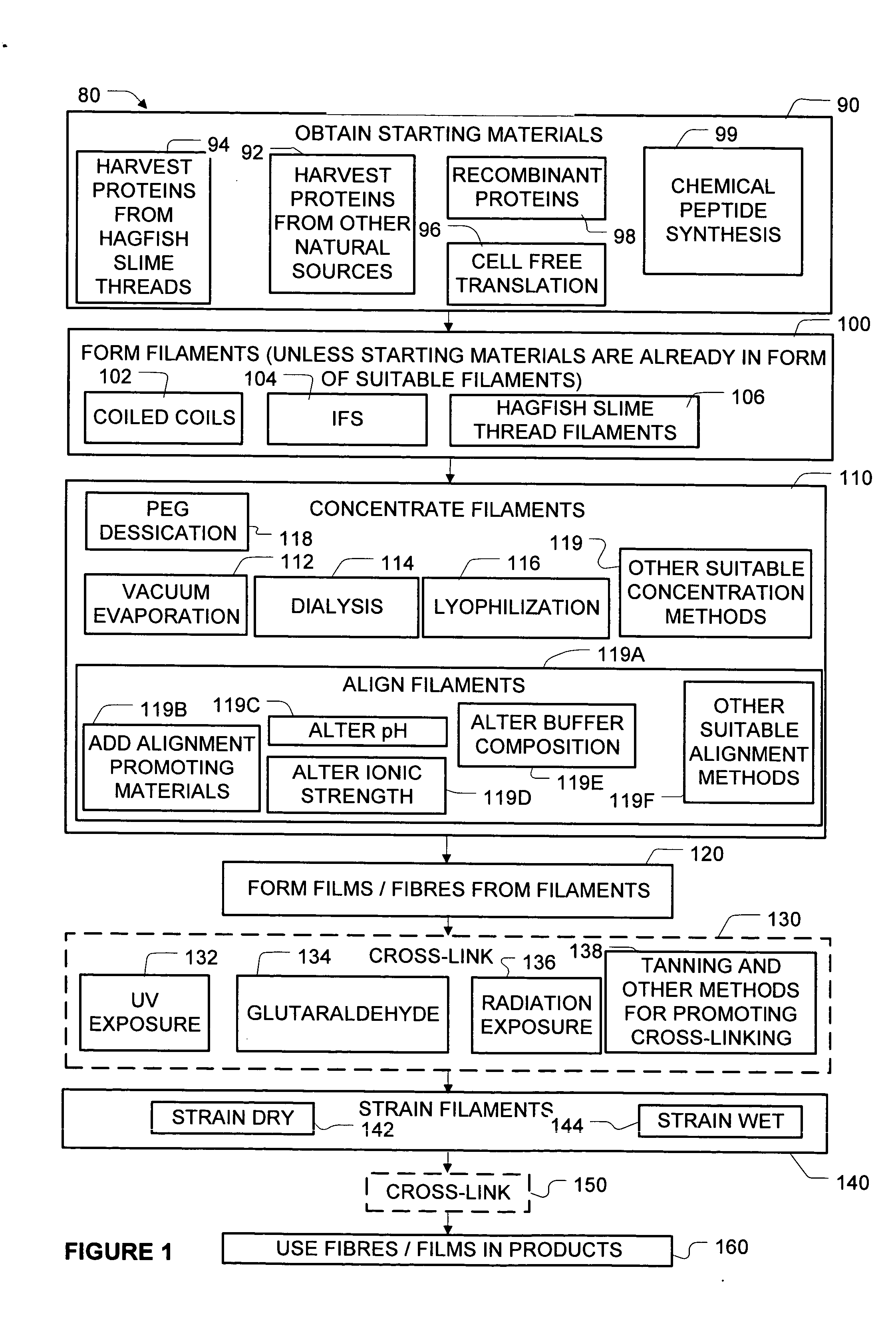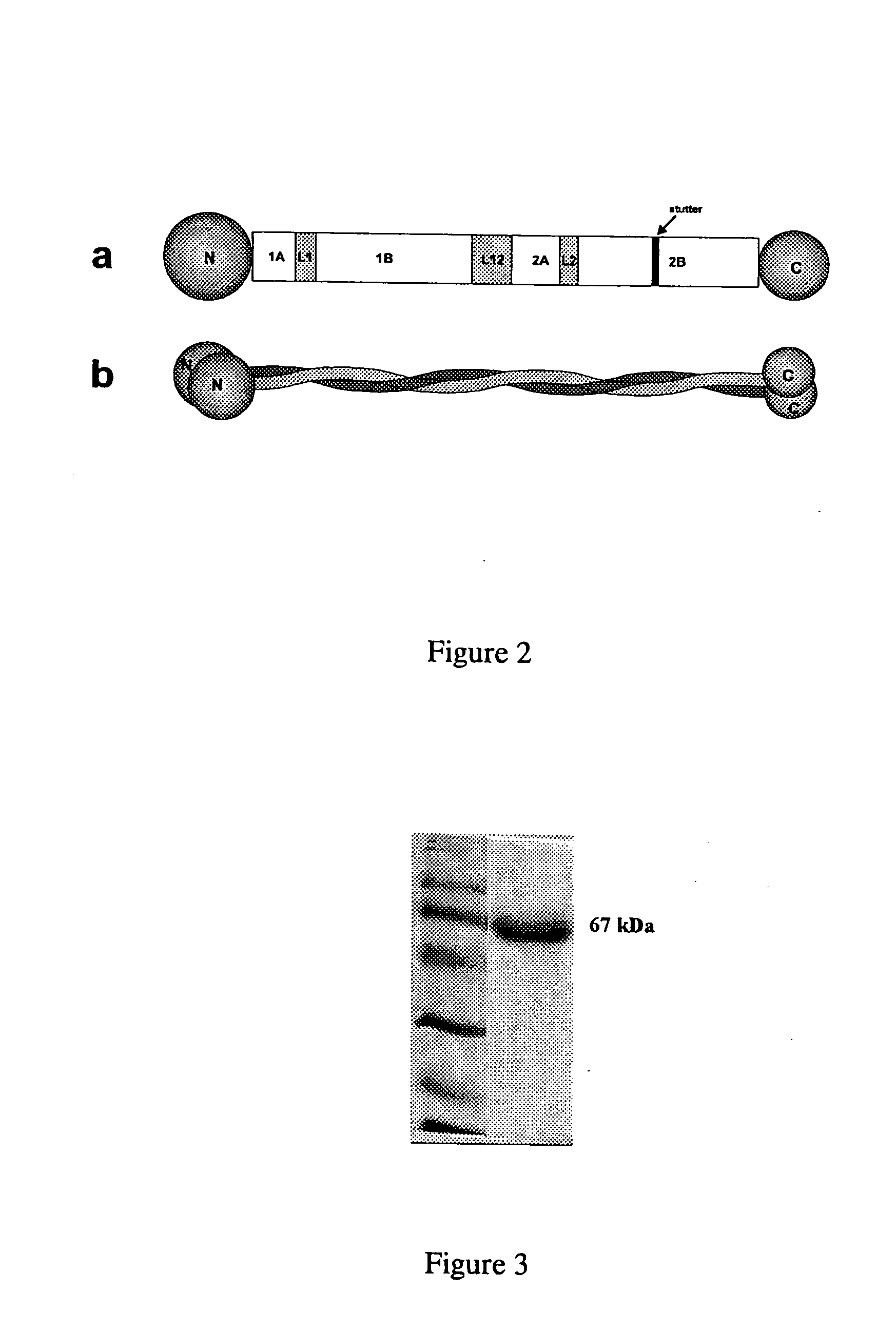Alpha-helical protein based materials and methods for making same
a technology of alpha-helical protein and materials, applied in the field of biological polymers and materials, can solve problems such as and achieve the effect of altering the mechanical properties of filaments
- Summary
- Abstract
- Description
- Claims
- Application Information
AI Technical Summary
Problems solved by technology
Method used
Image
Examples
Embodiment Construction
5.1 Mechanical Testing of Hydrated Slime Threads
Slime threads were isolated from Pacific hagfish (Eptatretus stoutii). Tensile properties of slime threads were measured using a modification of a glass microbeam force transducer apparatus as described in (Pollak, 1991). The technique is based on the premise that extremely small tensile forces can be measured by attaching a test sample to a fine glass microbeam and monitoring the bending of the beam under a microscope as the sample is deformed. Deflections of the beam can be converted to force values using an equation derived from beam theory: F=3d E Il 3(1)
where F is the force, d is the deflection of the beam, E is the Young's modulus of glass, I is the second moment of area of the beam, and 1 is the length of the beam. The linear relationship between force and deflection holds for beam deflections up to about 10% of the length, and for this reason glass microbeams were chosen so that the maximum deflection during a test w...
PUM
| Property | Measurement | Unit |
|---|---|---|
| diameters | aaaaa | aaaaa |
| lengths | aaaaa | aaaaa |
| lengths | aaaaa | aaaaa |
Abstract
Description
Claims
Application Information
 Login to View More
Login to View More - R&D
- Intellectual Property
- Life Sciences
- Materials
- Tech Scout
- Unparalleled Data Quality
- Higher Quality Content
- 60% Fewer Hallucinations
Browse by: Latest US Patents, China's latest patents, Technical Efficacy Thesaurus, Application Domain, Technology Topic, Popular Technical Reports.
© 2025 PatSnap. All rights reserved.Legal|Privacy policy|Modern Slavery Act Transparency Statement|Sitemap|About US| Contact US: help@patsnap.com



